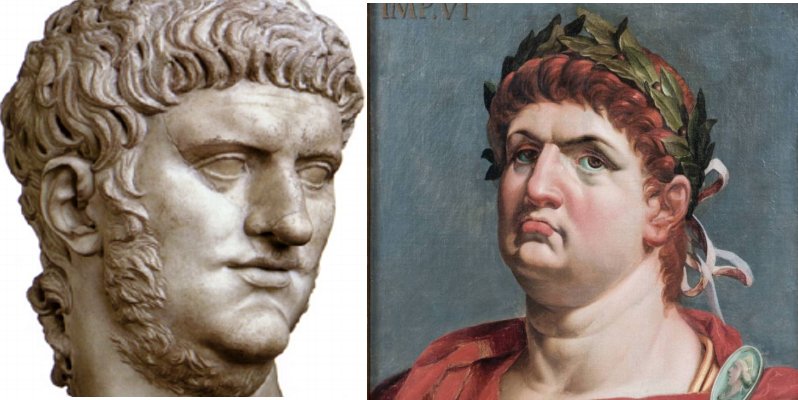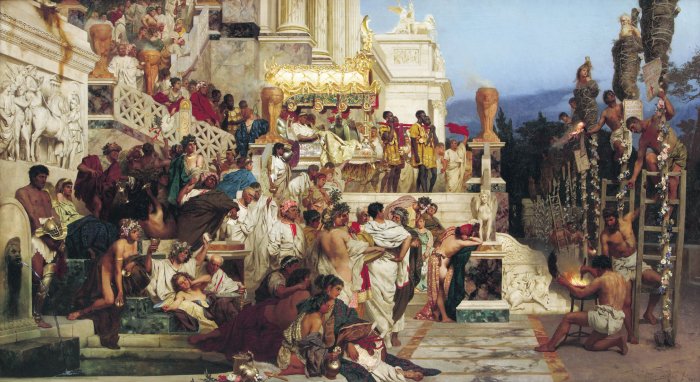Who Was Pseudo-Nero?
Conny Waters - AncientPages.com - Nero (37-68 A.D) was one of ancient Rome’s famous, or rather infamous emperors. Nero was a tyrant, and he is today best known for his debaucheries, killing his mother, committing several political murders, and persecuting Christians. He also had a passion for music that probably led to an apocryphal rumor that he “fiddled” while Rome burned during the great fire of 64 A.D.
Credit: Public Domain
In June 68 A.D, Emperor Nero committed suicide near the villa of his freedman Phaon, and it did not take long before various Nero impostors appeared between the autumn of 69 AD and the reign of the emperor Domitian, the third and last emperor of the Flavian dynasty.
The first pseudo-Nero appeared in the Roman province of Achaia, which is today in modern Greece. It is unknown why he chose this specific place. Still, it could be because Nero had recently visited Greece (66-67 AD) to participate in its Panhellenic Games.
After the emperor Nero committed suicide near the villa of his freedman Phaon in June of 68 AD, various Nero impostors appeared between the autumn of 69 AD and the reign of the emperor Domitian.
According to historians, there were three pseudo-Neros. These historical imposters were most likely inspired by circulating prophecies that predicted Nero would regain his kingdom in the East.
The Torches of Nero, by Henryk Siemiradzki. According to Tacitus, Nero targeted Christians as those responsible for the fire.
The first Pseudo-Nero appeared in the autumn of 68 AD, or the early winter of 69 AD, in the Roman province of Achaia, modern Greece. Nero had recently visited Greece (66-67 AD) to participate in its Panhellenic Games, which may account for some of the impostor's support.
According to the historian Tacitus, the fake Nero, who was either a slave from Pontus or a freedman from Italy, made appeals to bring Roman soldiers en route to Italy over to his growing armed force.
Tacitus does not reveal much about the impostor's early career, except that the Pseudo-Nero gathered around him a group of army deserters and then set out to sea, where he began a career in piracy while maintaining his claim to be the emperor. He was eventually apprehended and beheaded.
The second pseudo-Nero was a Roman man named Terentius Maximus.
He gained his first followers in Asia and many more during his march to the Euphrates. When things did not turn out as he hoped, he fled to Parthia and tried to gain their support.
In time, his true identity was revealed, and he was executed.
Twenty years after Emperor Nero’s death, the third pseudo-Nero appeared during the reign of Domitian. Parthians supported him, but he, too, had to give up the idea of pretending to be the genuine Emperor Nero.
Updated on November 15, 2023
Written by - Conny Waters AncientPages.com Staff
Expand for referencesGallivan, P.A. "The False Neros: A Re-Examination," Historia 22 (1973)
More From Ancient Pages
-
 Stunning Reconstructions Shows What Colchester Looked Like During Roman Times
News | Jul 2, 2022
Stunning Reconstructions Shows What Colchester Looked Like During Roman Times
News | Jul 2, 2022 -
 Why Did People Start Eating Egyptian Mummies? The Weird And Wild Ways Mummy Fever Swept Through Europe
Featured Stories | Jun 7, 2022
Why Did People Start Eating Egyptian Mummies? The Weird And Wild Ways Mummy Fever Swept Through Europe
Featured Stories | Jun 7, 2022 -
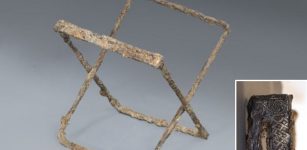 Extremely Rare Medieval Folding Chair Reveals Its Secrets
Archaeology | Oct 13, 2023
Extremely Rare Medieval Folding Chair Reveals Its Secrets
Archaeology | Oct 13, 2023 -
 Long-Forgotten Ancient Book Contains Extensive Scientific Survey Of North America Made 4,500 Years Ago
Featured Stories | Jul 26, 2019
Long-Forgotten Ancient Book Contains Extensive Scientific Survey Of North America Made 4,500 Years Ago
Featured Stories | Jul 26, 2019 -
 Demise Of Cambodian City Angkor Caused By Decline In Occupation And Not Abrupt Collapse
Archaeology | Apr 18, 2019
Demise Of Cambodian City Angkor Caused By Decline In Occupation And Not Abrupt Collapse
Archaeology | Apr 18, 2019 -
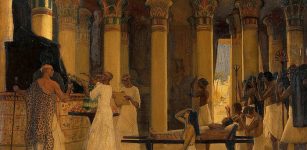 Egyptians Mastered Medicine Thousands Of Years Ago
Civilizations | Oct 1, 2015
Egyptians Mastered Medicine Thousands Of Years Ago
Civilizations | Oct 1, 2015 -
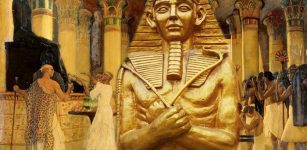 Harem Conspiracy – Plot To Murder Ramesses III, The Last Great Warrior Pharaoh
Featured Stories | Mar 24, 2018
Harem Conspiracy – Plot To Murder Ramesses III, The Last Great Warrior Pharaoh
Featured Stories | Mar 24, 2018 -
 Extraordinary Archaeological Discovery In Spain
Archaeology | Oct 10, 2023
Extraordinary Archaeological Discovery In Spain
Archaeology | Oct 10, 2023 -
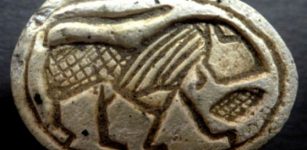 A Scarab Seal At Tel Gerisa, Depicts Walking Lion – Symbol Of Strength, Power And Authority
Archaeology | Sep 5, 2023
A Scarab Seal At Tel Gerisa, Depicts Walking Lion – Symbol Of Strength, Power And Authority
Archaeology | Sep 5, 2023 -
 African Skeletons From Early Colonial Mexico And First-Generation Slaves
Archaeology | May 4, 2020
African Skeletons From Early Colonial Mexico And First-Generation Slaves
Archaeology | May 4, 2020 -
 Undiscovered Neanderthal Artifacts From The Ice Age Are Submerged Below The Waves Of The English Channel
Archaeology | Nov 23, 2022
Undiscovered Neanderthal Artifacts From The Ice Age Are Submerged Below The Waves Of The English Channel
Archaeology | Nov 23, 2022 -
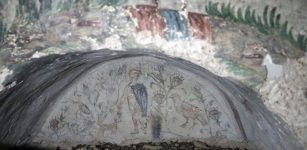 Magnificent 1,800-Year-Old Rock Tombs Beautifully Decorated Discovered In The Ancient City Of Blaundus
Archaeology | Oct 5, 2021
Magnificent 1,800-Year-Old Rock Tombs Beautifully Decorated Discovered In The Ancient City Of Blaundus
Archaeology | Oct 5, 2021 -
 Sinister Manchac Swamp And The Chilling Curse Of Julia Brown
Featured Stories | Aug 25, 2021
Sinister Manchac Swamp And The Chilling Curse Of Julia Brown
Featured Stories | Aug 25, 2021 -
 Dramatic Life Story Of Queen Marie Antoinette Executed By Guillotine During The French Revolution
Featured Stories | Oct 18, 2021
Dramatic Life Story Of Queen Marie Antoinette Executed By Guillotine During The French Revolution
Featured Stories | Oct 18, 2021 -
 Takshashila: Renowned Learning Center That Attracted Buddhist Masters, Disciples And Students Of The World
Featured Stories | Jul 23, 2016
Takshashila: Renowned Learning Center That Attracted Buddhist Masters, Disciples And Students Of The World
Featured Stories | Jul 23, 2016 -
 1500-Year-Old Mystery Of The Sandby Borg – Excavation Of Ringfort On Öland, Sweden
News | Jan 1, 2014
1500-Year-Old Mystery Of The Sandby Borg – Excavation Of Ringfort On Öland, Sweden
News | Jan 1, 2014 -
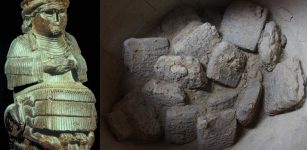 Sensational Find: Huge Cuneiform Archive Of Mysterious Ancient Clay Tablets Discovered In Iraq
Archaeology | Oct 26, 2017
Sensational Find: Huge Cuneiform Archive Of Mysterious Ancient Clay Tablets Discovered In Iraq
Archaeology | Oct 26, 2017 -
 Early European Farmers Traced To Anatolia, DNA Study Shows
Archaeology | Jan 5, 2016
Early European Farmers Traced To Anatolia, DNA Study Shows
Archaeology | Jan 5, 2016 -
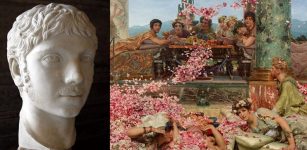 Controversial Roman Emperor Heliogabalus Wanted To Be A Woman And Much More
Featured Stories | Jun 14, 2020
Controversial Roman Emperor Heliogabalus Wanted To Be A Woman And Much More
Featured Stories | Jun 14, 2020 -
 3,000-Year-Old Geoglyphs May Depict The Heavens
Archaeology | Jun 25, 2018
3,000-Year-Old Geoglyphs May Depict The Heavens
Archaeology | Jun 25, 2018

